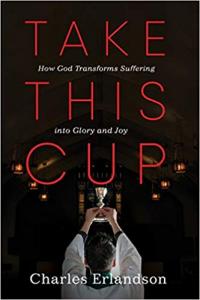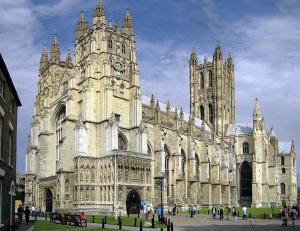Historical Definitions of Anglicanism
So far, I’ve looked at a variety of definitions of Anglicanism: a 2-word definition, a one-sentence definition, normative, structural, and stylistic definitions of Anglicanism.
A final kind of definition of Anglicanism commonly offered is a historical one, based on the development of the Anglican tradition over time.
Historically defined, Anglicanism has both Catholic and Protestant characteristics that are both present in Anglicanism today. The English church has roots in the catholic faith that was planted in England in the first few centuries after Christ and was reshaped by the English Reformation that reformed the received catholic traditions, by the Catholic revival of the nineteenth century, and by other historical movements. Any historical definition of Anglicanism must also take into account recent developments.
The value of historical definitions of Anglicanism is that they help locate Anglicanism in the context of the catholic and apostolic church and also help to highlight the continuity between contemporary and historical Anglicanism. They also facilitate understandings of the connections between and development of the other kinds of definitions in relation to each other. Since religious identities develop over time as the church interacts with culture, and since decisive re-shapings of Anglican identity have occurred within the context of particular historical circumstances, a historical component is an important aspect of definitions of Anglicanism. Historical definitions of Anglicanism might, therefore, be useful in helping to understand how structural, normative, and stylistic definitions relate and develop over time.
However, historical definitions of Anglicanism are also insufficient by themselves. They are limited in that they can only be descriptive of what has happened and cannot by themselves prescribe what ought to be or prescribe a means for evaluating what has happened. I’ve always thought that Alexander Pope’s maxim, “Whatever is, is right” is too fatalistic and unhelpful.
In a tradition with a varied history, there must be some principles or norms by which various aspects of that history are valued, even if Anglicans often disagree about what principles or norms are most appropriate. A merely historical definition might have the effect of locking Anglicanism into the past, or, conversely, of enslaving it to a particular, contemporary identity in which what currently exists is taken as the definition of what should be. As Paul Avis notes, “The fact remains that the political, social and cultural context can only provide the occasion for a Church and contribute to the shaping of its outward form: it cannot provide a definition of a Church or its raison d’etre.”[1]
One of the most important questions regarding any historical definition of Anglicanism is the question: “When did Anglicanism begin?” The usual answer given is that it began during the reign of Henry VIII as a result of his desire to get rid of his old wife and get a new one. The assumption is not only that Anglicanism was the creation of something new by Henry but also that it is based on a historical whim of an immoral political leader. The truth is, however, that the Church of England has a long and venerable history long before Henry and that Henry, for all of the changes he brought, did not create an entirely new church. For this reason, I know of one Anglican seminary professor who jokingly tells his students that if they answer the question “When did Anglicanism begin?” with “Henry VIII” – he’d flunk them!
In reality, Anglicanism today is an extension of the Catholic Church that was planted in England very early on. While many changes have taken place in that Church (what church hasn’t undergone sizeable changes since the early Church?), there is also an important continuity that is often missed. This Church, which had already undergone many radical revisions since the days of the early Church by the time Henry VIII was in power, was, in fact, given a decisive shape by the events of the English Reformation. While the continuity with the early Church should be acknowledged, there is also some truth in the notion that something definitive and different took place during the sixteenth century.
The Church changes so that she may remain the same.
To some degree, historical markers are always somewhat arbitrary. History is like an organism in which all of the parts relate and grow together over time, and so, to quote Wordsworth, “we murder to dissect.” I’ve attempted to tame Anglican history by looking at it in terms of 5 stages of growth. As you’ll see, my emphasis is on the post-Reformation identity of Anglicanism.
Here, in brief, are the 5 stages of Anglicanism. I’ll develop each in subsequent blogs.
5 STAGES OF ANGLICANISM
StageI.Pre-Reformation Anglicanism
Stage II. 1533-1867: Erastian Reformed Catholicism
StageIII. 1867-1960s: Colonial Relationships; 4 Spiritualities
Stage IV. 1960s-1998 (or 2003): the Anglican Communion
Stage V. 1998 (or 2003)-present: Postmodern Anglicanism
[1] Paul Avis, “What is ‘Anglicanism’?” in The Study of Anglicanism, 406.









